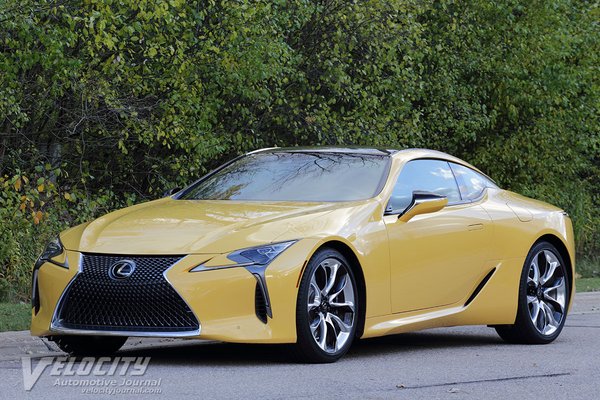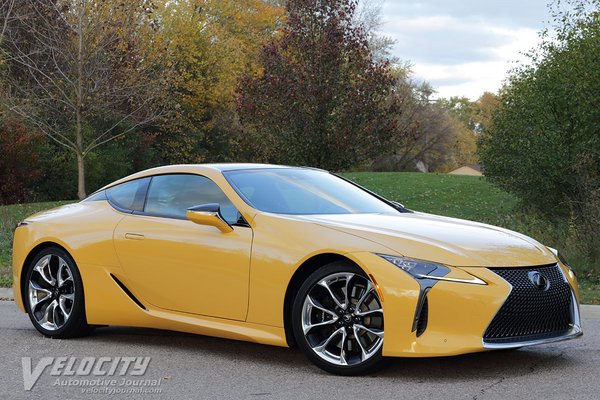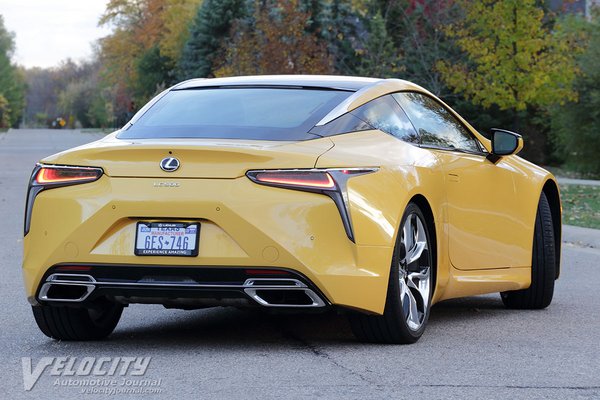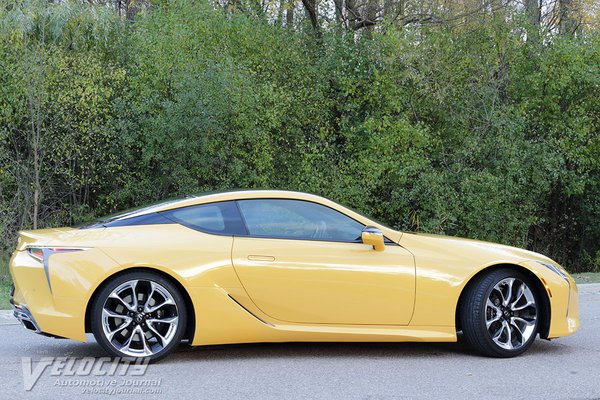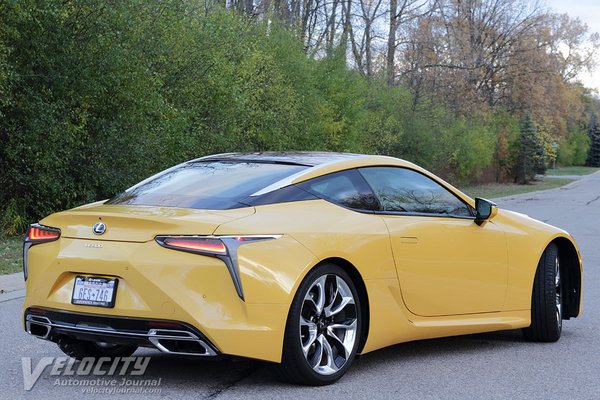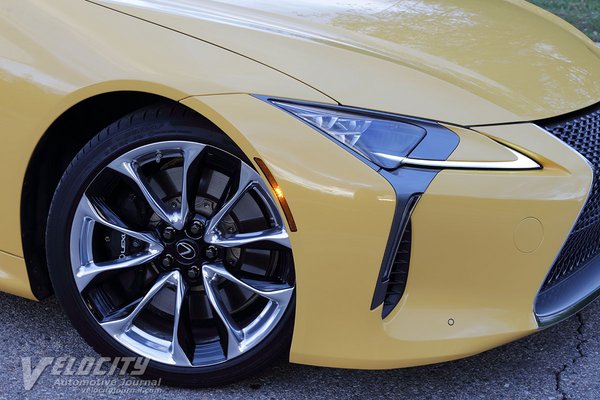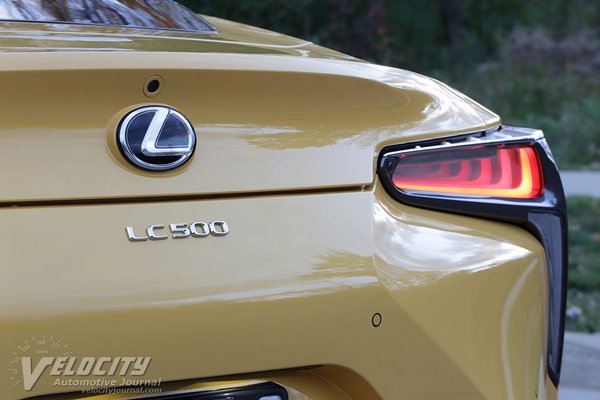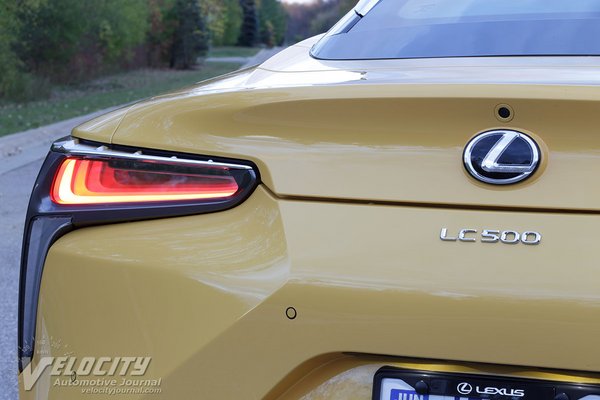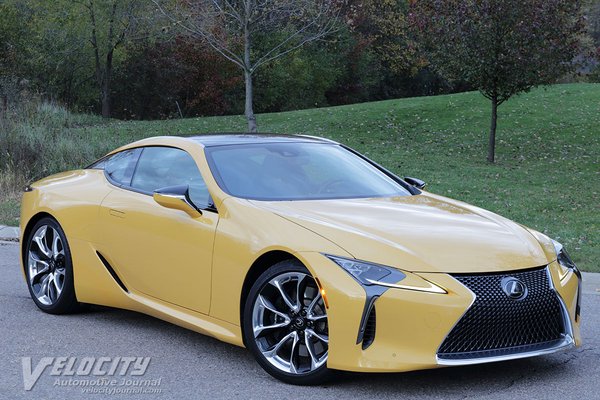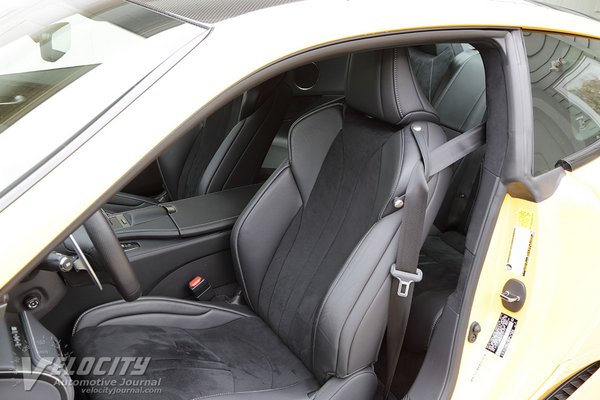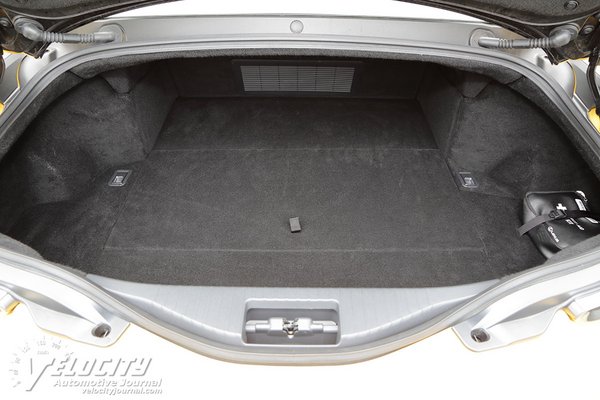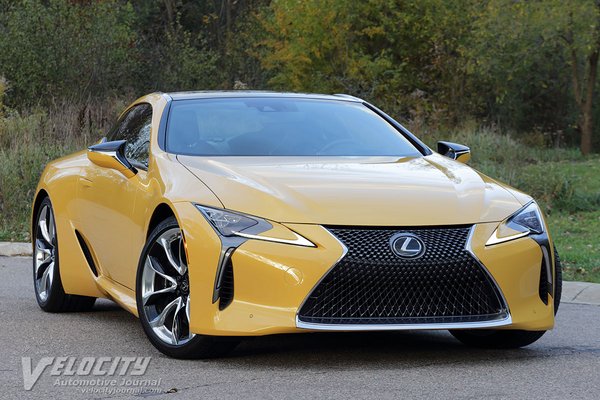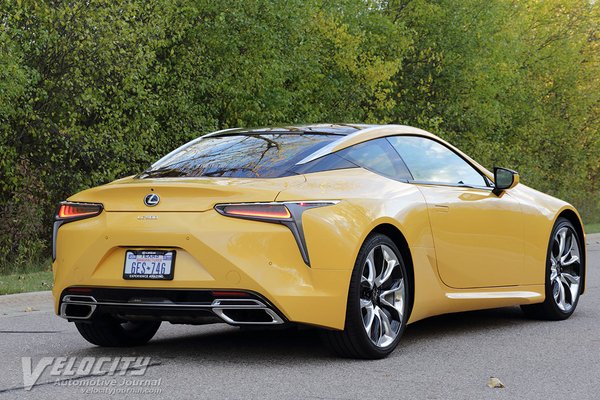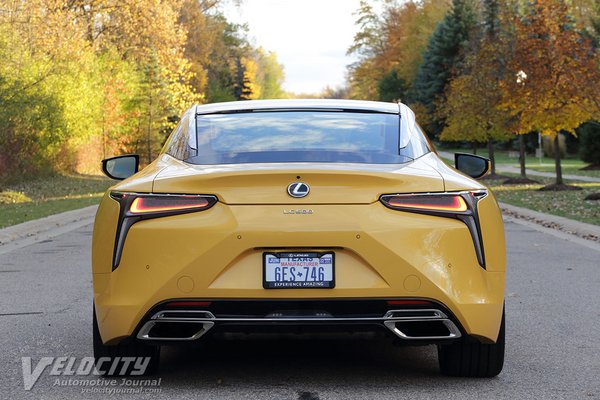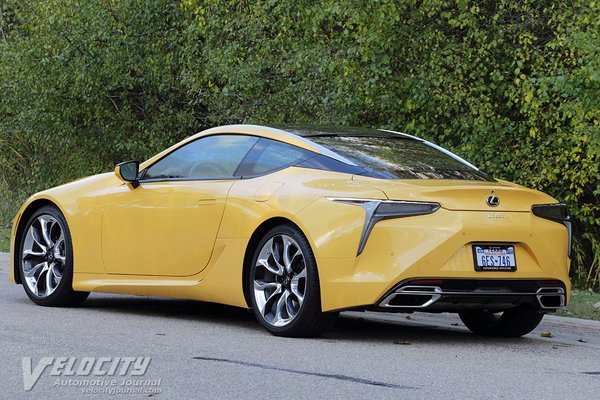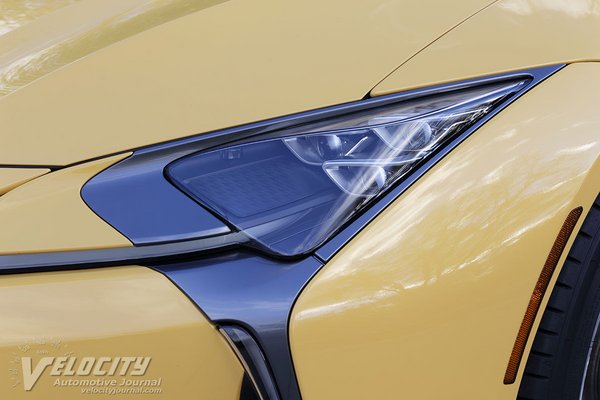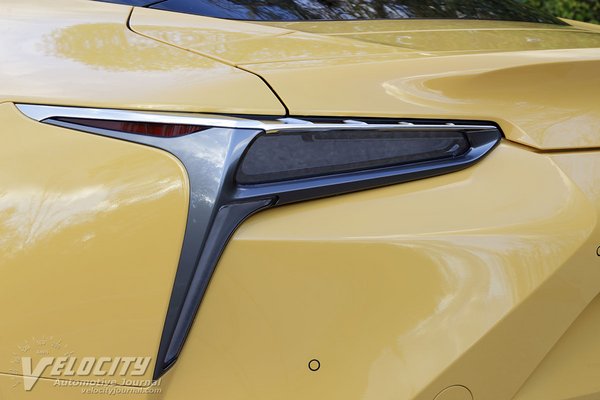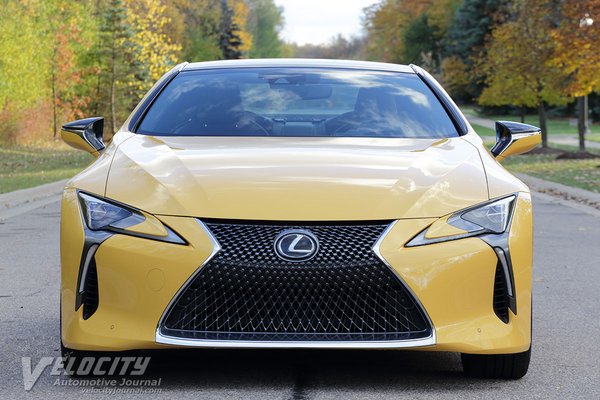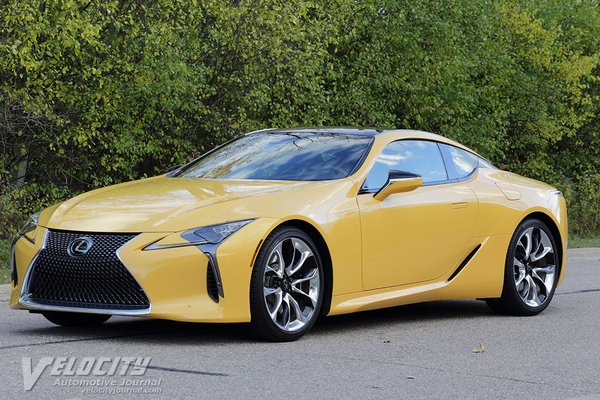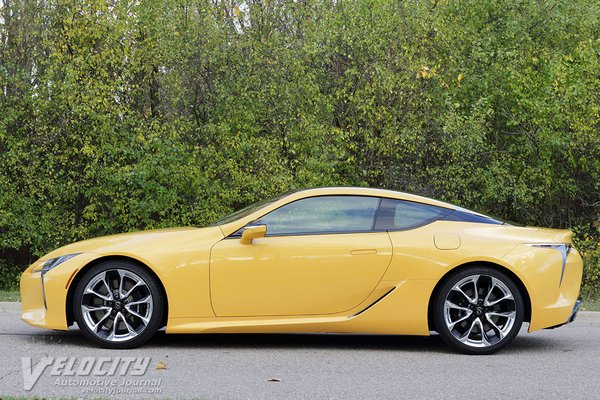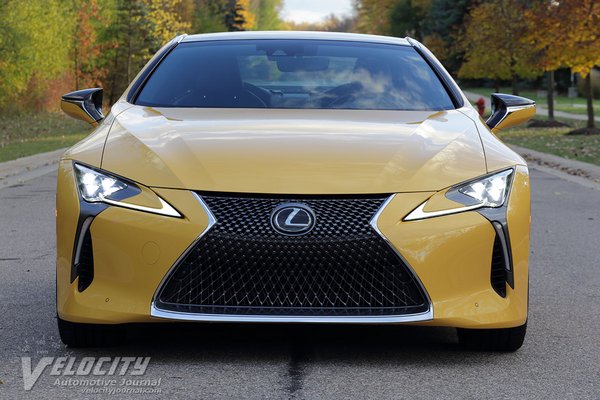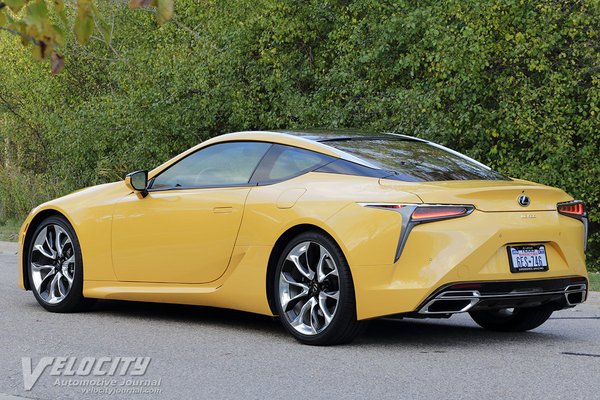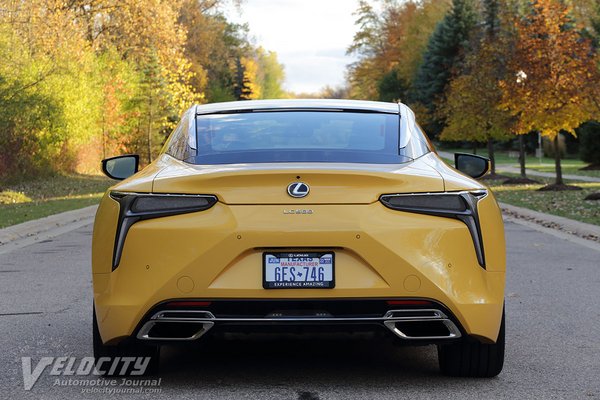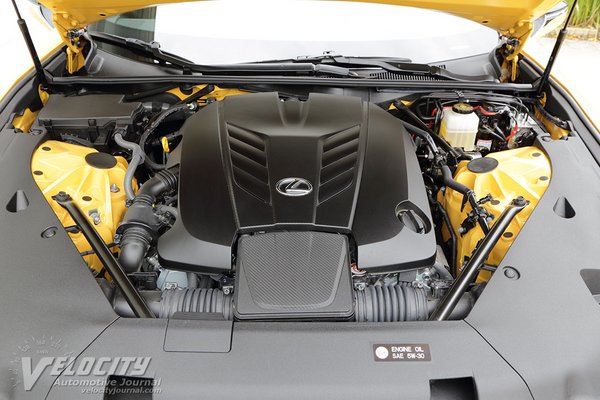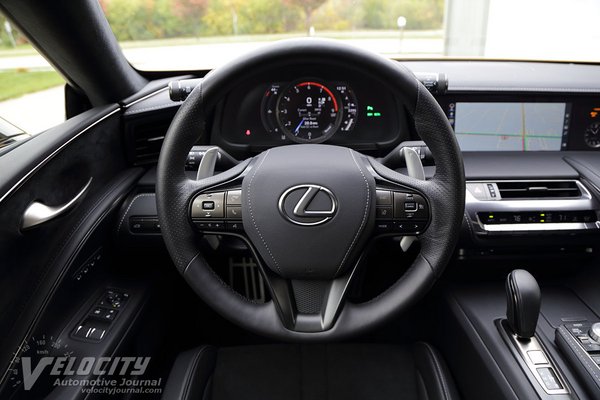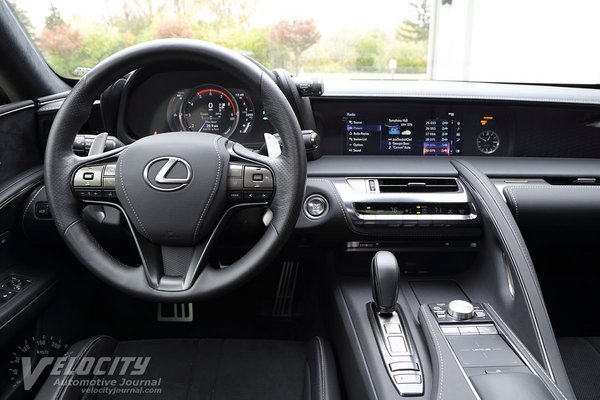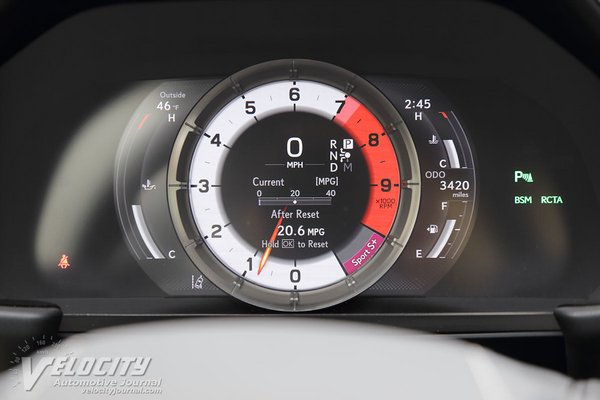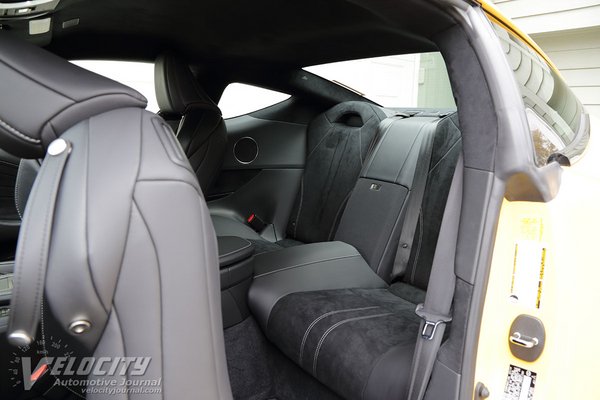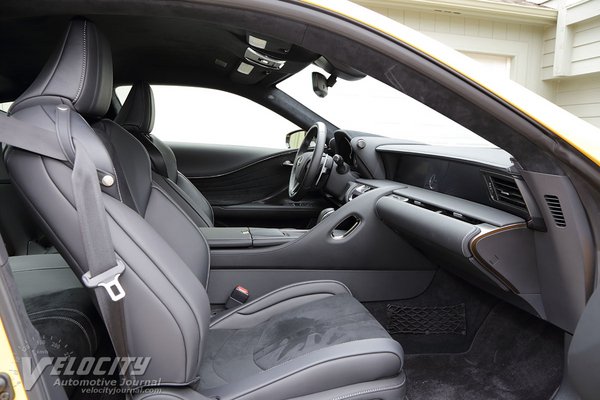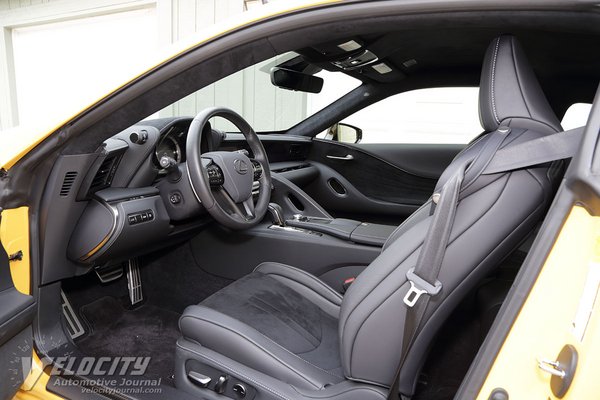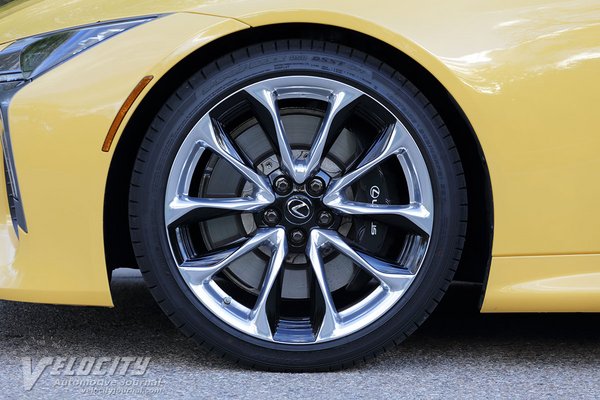2020 Lexus LC 500
12/30/2020
Shahed Hussain
Lexus offers a broader model range than most people think, spanning sedans, coupes and SUVs across a wide price range. The familiar RX SUV, ES and LS sedans have a long history in the Lexus lineup, but many are unfamiliar with the Lexus coupes: the RC and LC. The LC is among the rarest Lexus models in a niche segment dominated by German manufacturers. As a full line luxury brand, Lexus needed a premium coupe to accompany the LS luxury sedan, so the LC fits that role.
Of the three LC models, the V-8 LC 500 coupe ($92,950), is the most sport-oriented version. The other variants are the LC 500h hybrid ($97,510), driven by 3.5L V-6 plus a dual-motor/battery system, and the new for 2021 LC 500 Convertible ($101,000), which shares the same V-8 powertrain as the LC coupe.
Our tested 2020 LC 500 had several options that drove the MSRP past $106K: all weather package ($250), 21-in. forged wheels ($2,650), head up display ($900), limited slip differential ($390), Mark Levinson audio system ($1,220), parking assist ($500), and the performance package ($5,950). The total tallied up to $106,440 including the $1,025 delivery fee. Significant standard or optional equipment not already noted includes: adaptive variable suspension, performance brakes, active rear steering, dynamic radar cruise control, heated/ventilated Alcantara 8-way power front sport seats, Apple CarPlay compatibility, heated steering wheel, 10.3 in. infotainment display, navigation, speed-activated rear wing, carbon fiber roof, and carbon fiber door scuff plates. A full suite of active safety technologies is standard: steering assist, lane departure alert, pre-collision warning, automatic emergency braking, blind spot monitor w/rear cross-traffic alert, and rearview camera.
The all-aluminum 2UR-GSE 5.0L V-8 in the LC 500 is shared with the RC F coupe, and the recently departed GS F sedan. Direct-injection and dual overhead-cam heads with variable valve-timing (VVT-i) deliver impressive power: 471-hp @ 7,100 RPM, accompanied by a torque output of 398 lb.-ft @ 4,800 RPM. A 10-speed AGA0E automatic drives the rear wheels through a 2.937:1 final drive and a TORSEN(R) limited-slip differential. The AGA0E is a close-ratio gearbox that reserves eighth (0.792:1) through tenth (0.598:1) gears as overdrive ratios. Lexus claims the 0-60 mph sprint in 4.4 seconds and an electronically limited top speed of 168 mph. EPA fuel consumption estimates are 16/25 mpg (city/hwy.). We averaged 20-23 mpg in mixed highway and urban driving.
Lexus engineers designed multi-link suspensions for both front and rear axles. Coil springs, adaptive dampers (revised for 2020) and stabilizer bars are at all four wheels. Front brakes are massive 15.7 in. dia. vented discs gripped by 6-piston aluminum calipers. Rear brakes use 14.1 in. vented discs clamped by 4-piston aluminum calipers. The rear axle is actively steerable for additional stability and maneuverability. The standard 20-in. cast alloy wheels (forged alloys are optional) get 245/45RF20 and 275-40RF20 (front/rear) tires. Our test vehicle rolled on the optional 21-in. forged alloy wheels wrapped in 245/40RF21 and 275/35RF21 (front/rear) Dunlop Sport Maxx 050 run-flat summer tires. Michelin and Bridgestone tires are also available. The variable-ratio rack-and-pinion steering system is geared for 2.6 turns lock-to-lock, with speed-sensitive electric motor assist. Curb weight is a substantial 4,280 lbs. split 54/46 front-to-rear.
As expected from the Lexus, the cockpit-like LC interior design is a superb combination of premium materials and build quality. Suede-like Alcantara trim lines the door panels and seats. Matte aluminum trim throughout the interior contrasts with the dark gray theme. Stitching on the seat bolsters, steering wheel and other padded surfaces enhances the sense of interior elegance.
Lexus designed a very compact digital gauge cluster consisting of a simulated analog tachometer flanked by fuel level and coolant temperature bar graph gauges. The digital speedometer and vehicle status display is inset within the tachometer. A head-up display shows transmission drive mode, speed limit and vehicle speed. The leather-wrapped steering wheel has audio, phone, vehicle status, and cruise controls integrated within the spokes. Paddles behind the steering wheel enable manual shifts on demand. Preset powertrain modes are selectable via a knob on the gauge cluster: Eco, Comfort, Normal, Sport, Sport+, Snow, along with a Custom mode. In Sport+ mode, the tachometer display theme switches from white numerals on a black background to black numerals on a white background.
Bucking the current trend of tablet-like infotainment displays, Lexus integrates its 10.25 in. screen seamlessly into the dash. Note that Lexus uses a center console-mounted touchpad to interact with the non-touchscreen display. Compare to other Lexus touchpads, the unit in the LC is less sensitive and responds more accurately to touch inputs. Next to the touchpad are knobs and buttons for frequently used audio controls. Clearly labeled climate control settings are discreetly located under the center dash vent. A CD slot is tucked beneath the climate control display. Two USB ports and a 12V power outlet are available in the center console. A compact electronic shift lever controls the 10-speed automatic. The rear spoiler can be manually deployed or retracted via a center console button behind the shift lever.
The optional black Alcantara and leather sport seats are body-hugging and supportive for those with a slim and athletic physique. Larger passengers may find the sport seats too restrictive, and should try the standard seats instead. A low roofline also penalizes occupants over 6 ft. tall, as anyone taller will need to recline the seat for sufficient headroom. Opting for the carbon fiber roof shaves another 0.4 in. from front headroom compared to the standard glass roof. Front passenger legroom is restricted due to the protruding glovebox. A casual look at the rear seats leaves no doubt that only young children will fit; both legroom and headroom are scarce for adults.
Unlike most Lexus engines, the big V-8 starts up with a hearty rumble, courtesy of a variable active exhaust system. On startup, redline rpm is reduced for a few minutes until the engine warms up to operating temperature. The 2UR-GSE cranks out ample torque along with linear throttle response through the rev range. The 10-speed gearbox delivers nearly instant shifts in either automatic mode or via the paddles. Of the various preset powertrain modes, we mostly drove in Normal mode; Sport and Sport+ modes upshift at higher rpm, but we preferred using the paddles instead. Low speeds U-turns occasionally cause driveline binding, likely due to the limited-slip rear differential; after the vehicle warmed up, the binding disappeared.
Cruising at 80 MPH or higher, the chassis is composed and unaffected by uneven road surfaces or crosswinds. Acceleration at any speed is impressive, the LC is able to pull away from most traffic with ease, assisted with seamless downshifts from the automatic gearbox. The motorized rear spoiler deploys automatically at speed to increase downforce; an audible "thunk" confirms the spoiler has retracted into the trunk lid. Engine, tire and wind noise are pleasantly muffled at highway speeds, so the LC 500 is an excellent road trip cruiser for a lightly loaded couple.
Lexus development engineers struck a fine balance between handling and ride comfort. The communicative steering delivers immediate turn-in response, sharpened by the optional steerable rear axle. Minimal understeer and limited body roll endow the LC with the sharp reflexes expected from a sports car, but with the suspension compliance of a grand tourer. Braking performance was superb: the oversized rotors and multi-piston calipers hauled this heavy Lexus down from any speed with minimal effort, while pedal feel remained reassuringly firm with progressive actuation. The optional 21-in. wheels and low-profile tires absorbed most road imperfections but thumped audibly over deeper potholes, sending vibrations through the cabin. Customers who drive frequently on indifferently maintained roads should stick with the standard 20-in. wheels and higher profile tires.
The LC 500 is a superb expression of engineering expertise applied to amaze the customer. We found essentially no significant flaws in the LC, and at this price point it would be disappointing if we did. It's unfortunate that the typical Lexus customer might only glance at the LC on their way to lease an ES sedan or RX SUV. But for those few with disposable income and an appreciation of luxury coupes, the LC belongs on your short list.

